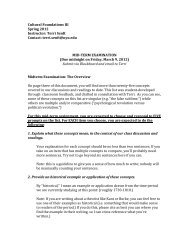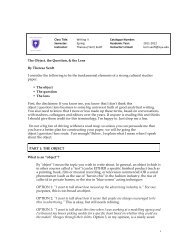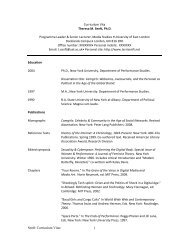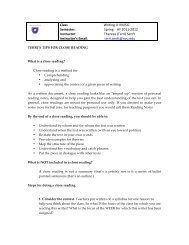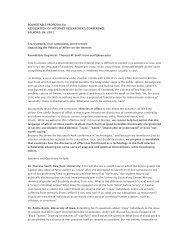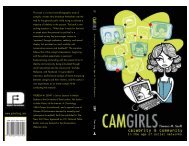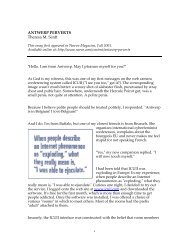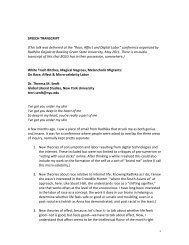New York University Gallatin School of Individualized ... - Terri Senft
New York University Gallatin School of Individualized ... - Terri Senft
New York University Gallatin School of Individualized ... - Terri Senft
You also want an ePaper? Increase the reach of your titles
YUMPU automatically turns print PDFs into web optimized ePapers that Google loves.
ing in audio or visual objects to serve as touch points for discussants. In this section <strong>of</strong><br />
the rationale, your job is to explain what you plan on doing to make your colloquium come<br />
to life.<br />
For instance, to ground the question, "What constitutes success in art?" a student might<br />
draw on a personal experience interning for a television station that rejected a<br />
documentary on a noteworthy topic because it wasn't 'sexy' enough. Alternately, he or she<br />
might discuss the difficulty that genre-defying visual artists have breaking into today's art<br />
market. Still another approach might be to briefly replicate a classic psychology experiment<br />
where students were asked to adjudicate certain slides <strong>of</strong> art work. Imagination can be<br />
great thing in this section <strong>of</strong> the rationale, but it is important to remember that when it<br />
comes time for the colloquium, demonstrations should last only as long as necessary to<br />
make your point and no longer.<br />
6. Don't shy away from contradictions and confusions regarding your colloquium topic.<br />
This is the time to talk about any "wild card" texts your ntroduce to your colloquium, or any<br />
other general ideas that contradict, confuse or generally "dirty up" your clean thoughts<br />
about your colloquium topic. As Sara Murphy writes, "Don't shy away from them. Put them<br />
out there."<br />
15 <strong>of</strong> 20



